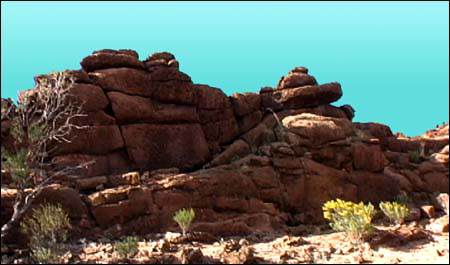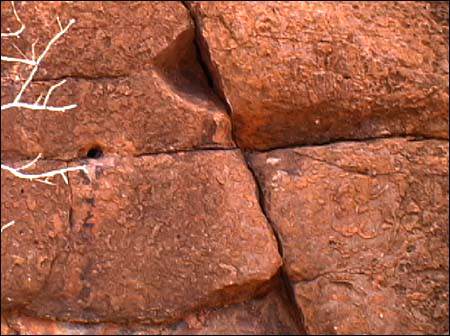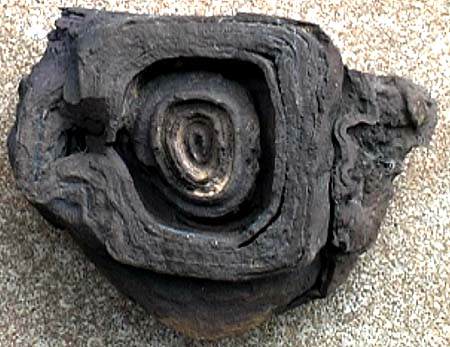|
by Gary Vey
A fragment of the "wall" was sent to the University of Massachusetts' Department of Natural Sciences for evaluation. The University sliced a portion of the rock and carefully analyzed the composition of each layer. They also subjected the rock to x-ray analysis and tested it for radiation. The results showed no anomalies that would be inconsistent with a natural formation of quartz and iron oxide. There was no radiation and no apparent signs of being carved or fabricated in any way. ViewZone received a number of requests to visit locations which contained similar structures all over the globe. We decided to visit the Southern state of Southwest Australia, in the Flinders Range area. We were informed that a similar "wall" could be found with similar banded structures. The top photograph shows the long straight formation that appeared, at a distance, to be a very old wall composed of massive stones. Many of the stones appeared to be rectangular with very tight masonry. The structure was located in a large flat plane, surrounded by the rugged mountains of the uniquely beautiful range that runs North to South in the remote outback. The climate is dry and rocky, much like the site in Oklahoma.  A close up view of the cracks in this linear structure reveal what appears to be masonry joints with beveled edges. The cracks appear to be man made and the "wall" is dissected into somewhat regular, rectangular blocks. Unlike the site in Oklahoma, this stone was much older and easily crumbled when struck with a hammer. There was evidence that the wall had been taller but had deteriorated from erosion. The stone was also more red in color, indicating the exterior was oxidized iron. But what about the interior composition?
 We climbed on the wall to view the interior of the blocks. It was obvious that this was the same type of structure that we had seen in photographs from Oklahoma but the rings were less obvious. In many instances they were so eroded that it was not possible to secure a good artifact to document. However, we did find many examples of smaller objects that showed the strange ring structure. One of these is pictured below.
 The analysis of these structures seems to be very similar. The dark and dense rings are composed largely of iron, which is partially oxidized. The interior, when it has not been eroded, is largely granules of quartz. It is believed that the original structure was formed eons ago by the pressure and action of ancient seas. The drying of the sandstone causes it to crack into regular, somewhat rectangular fragments. Exposed to the elements, rain and moisture leak into these cracks and into each fragment. Over time, the water escapes through the walls of the fragments, taking with it the iron and leaving the quartz. Because this occurs in many periods of wet and dry cycles, the denser iron is deposited on the exterior or the fragments and in internal layers, thus giving the appearance of multiple shells, or cells. Although this does not absolutely settle the mystery of the Oklahoma phenomenon, it does make the possibility of a natural cause more likely. As always, we welcome any additional comments or observations. ViewZone wishes to thank John McGovern for his assistance in locating and documenting this phenomenon in Australia. |
See also: OKLAHOMA COVER UP! || Strange Wall in Oklahoma
